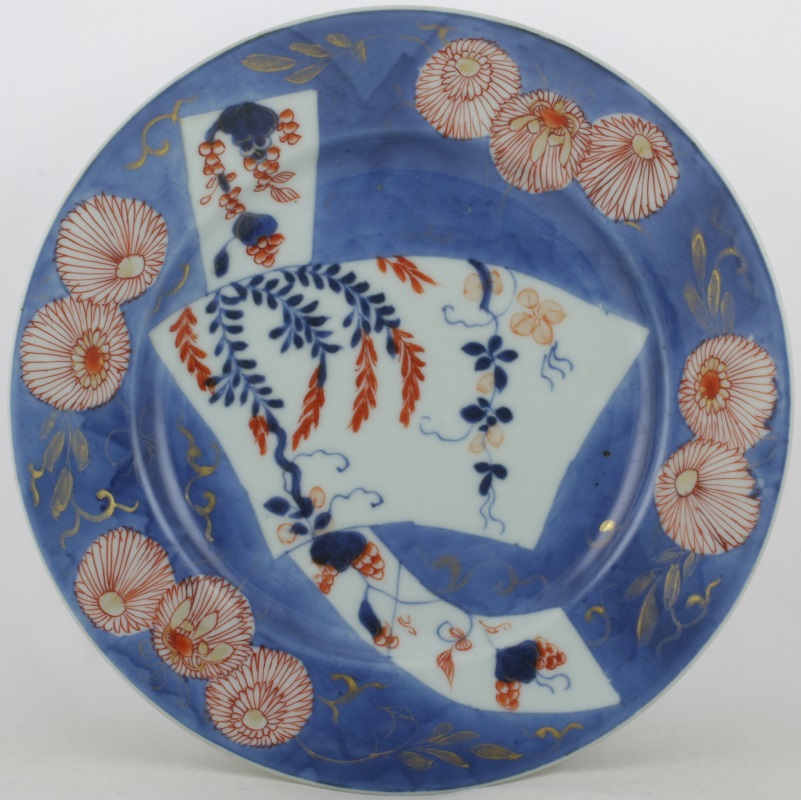
Sold Ceramics - Sold Chinese Imari 1700-1800 - Flowers, Animals and Long Elizas - Page 2
Object 2010878
Dish
China
1730-1740
Height 29 mm (1.14 inch), diameter of rim 210 mm (8.27 inch), diameter of footring 105 mm (4.1 inch), weight 317 grams (11.18 ounce (oz.))
Dish on footring, flat rim. Chinese Imari, decorated in underglaze blue, overglaze iron-red and gold with flowering plants in shaped panels on an underglaze blue ground with foliate and floral scrolls in gold. On the rim four groups with chrysanthemum flower heads. The reverse is undecorated.
Chinese Imari was first introduced in the early years of the 18th century as an imitation of Japanese 'Imari'. It was based on a simpler form and was essentially an export type. The Chinese did not imitate the Japanese Imari models but copied the designs like kiku (chrysanthemum), roundels and half-roundels, fan-shaped panels, partly unrolled bamboo blinds and rather pronounced foliate and floral scrolls. The Japanese Imari colour combination was also copied, the Chinese Imari colour palette consisted of iron-red enamel and gold in combination with underglaze blue. Sometimes other colours, and even certain enamels of the famille verte such as green and black, were sparingly introduced and used in a subtle way. Chinese Imari remained popular into the 1720 after which it became overshadowed by opaque enamels. (Howard & Ayers 1978, vol. 1, p.137, Jörg & Van Campen 1997, p.199, Sargent 2012, pp.183-188)
On this Chinese Imari dish the shaped panels filled with flowering plants and the pronounced foliate and floral scrolls with chrysanthemum flower heads are clearly Japanese design elements copied by the Chinese who in this way tried to appeal to their newly re-established European market.
Condition: A shallow glaze rough spot to the rim and some shallow rough spots to the footring.
References:
Howard & Ayers 1978, vol. 1, p.137
Price: Sold.


 create websites
create websites